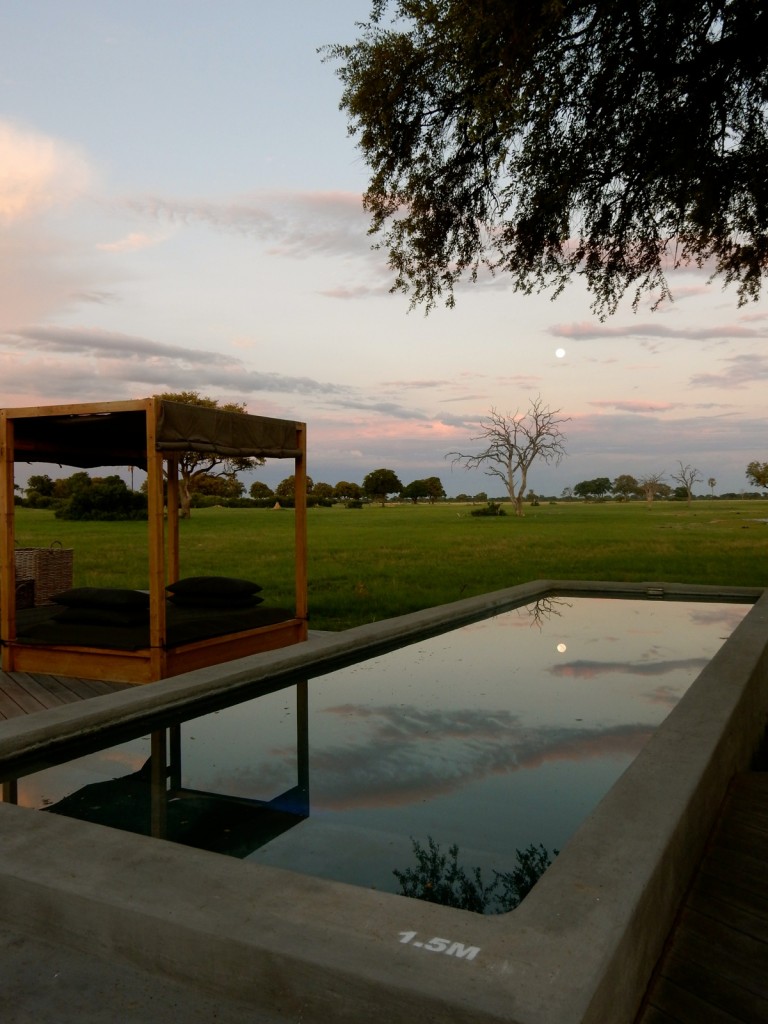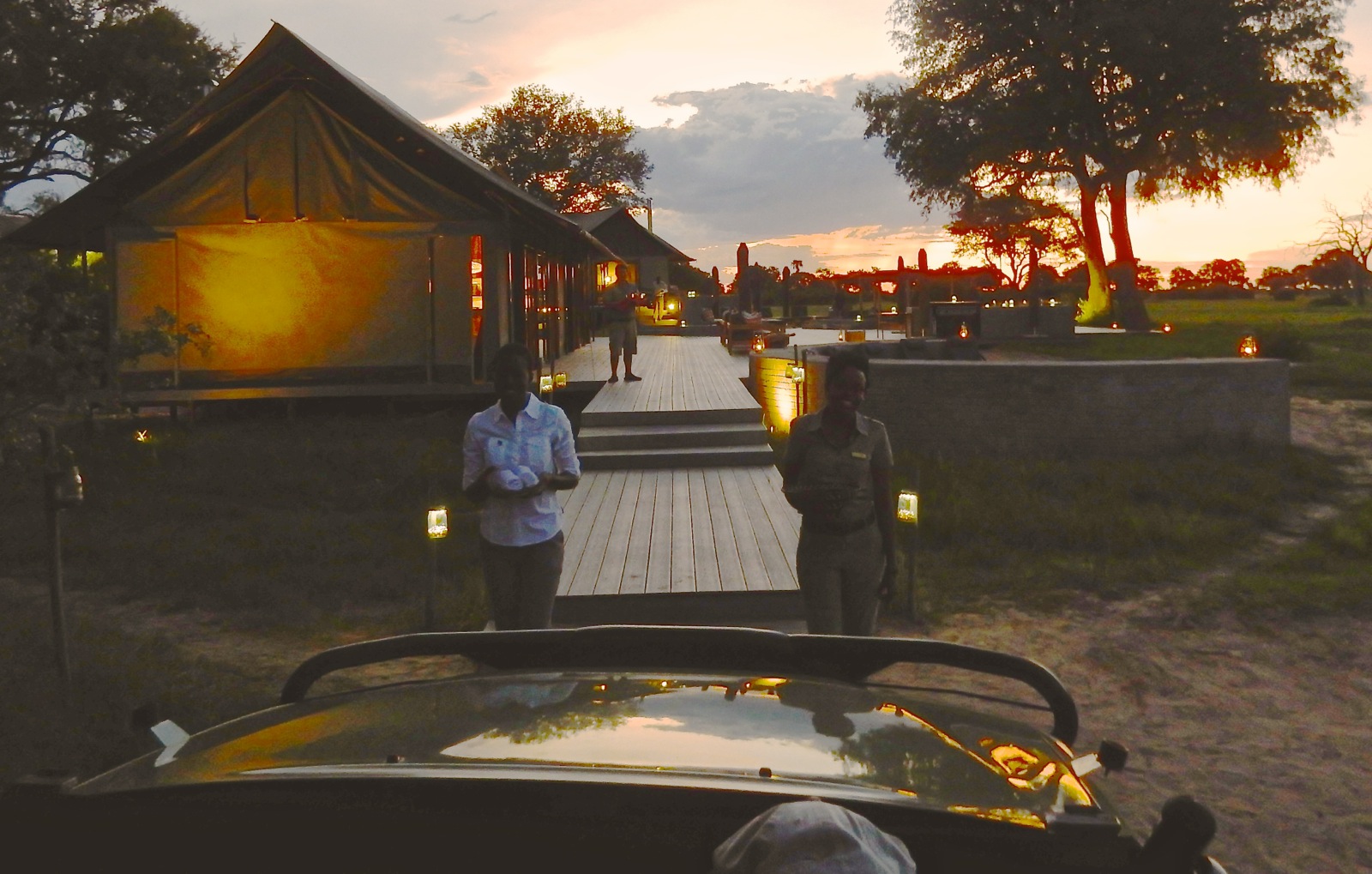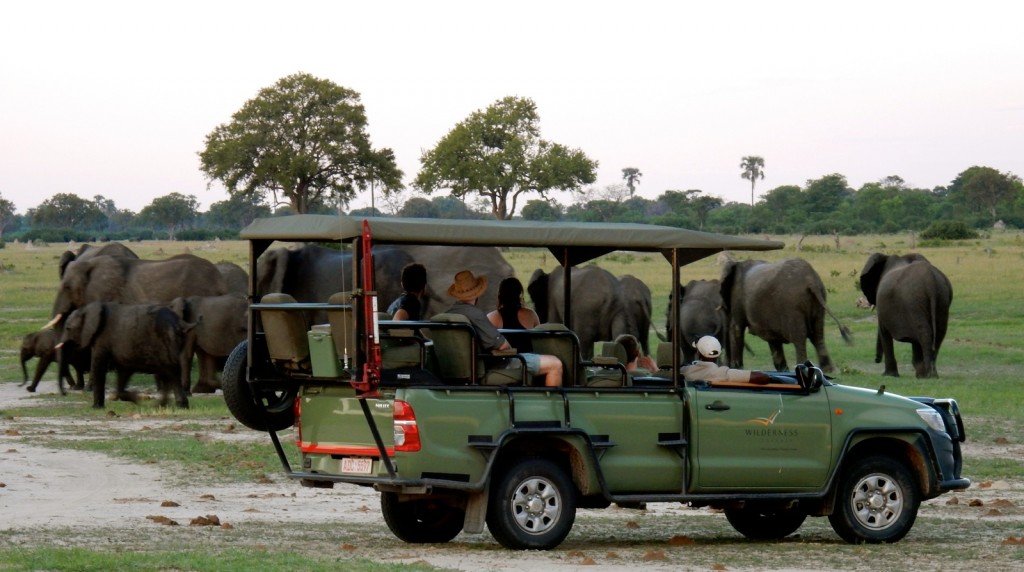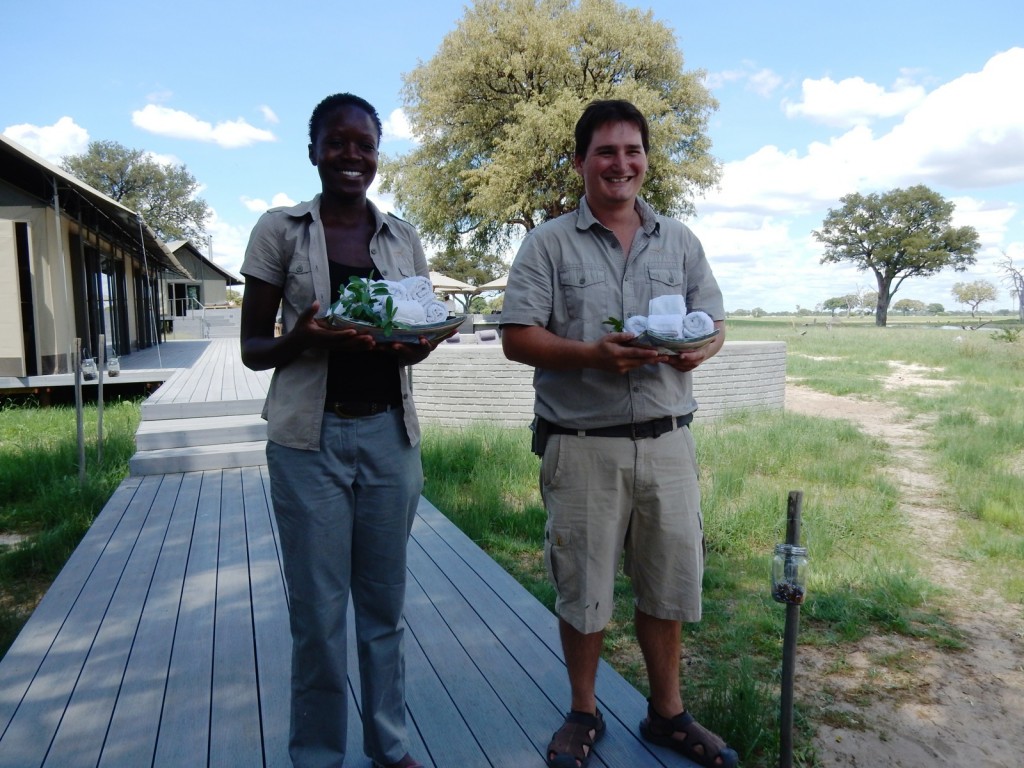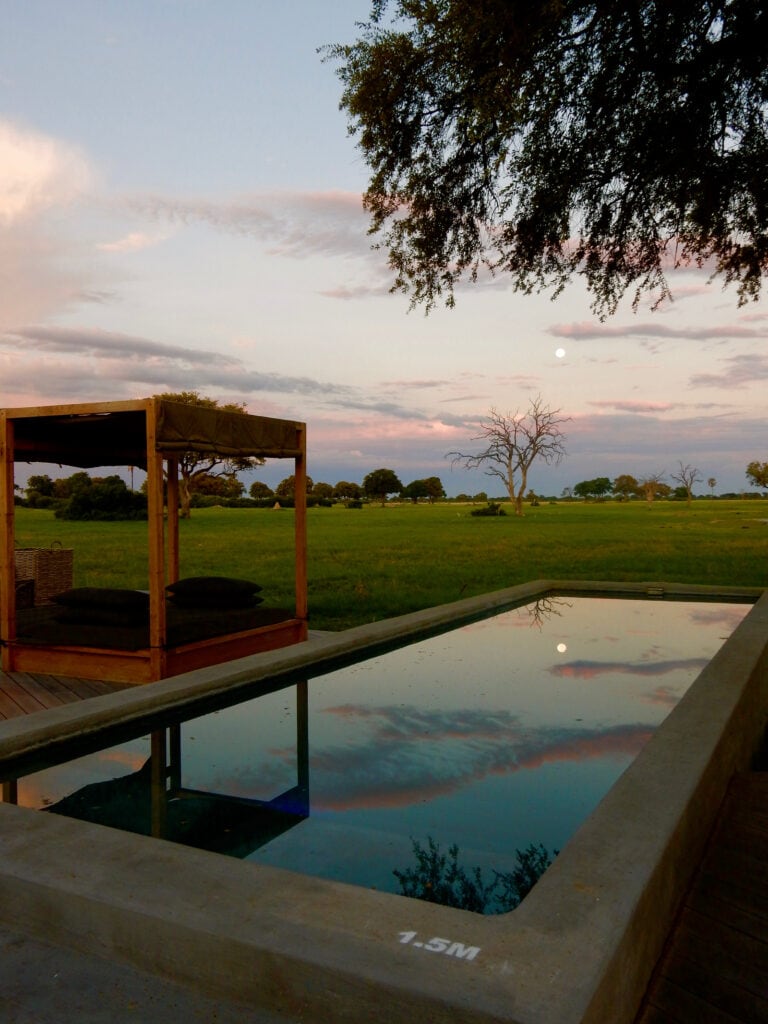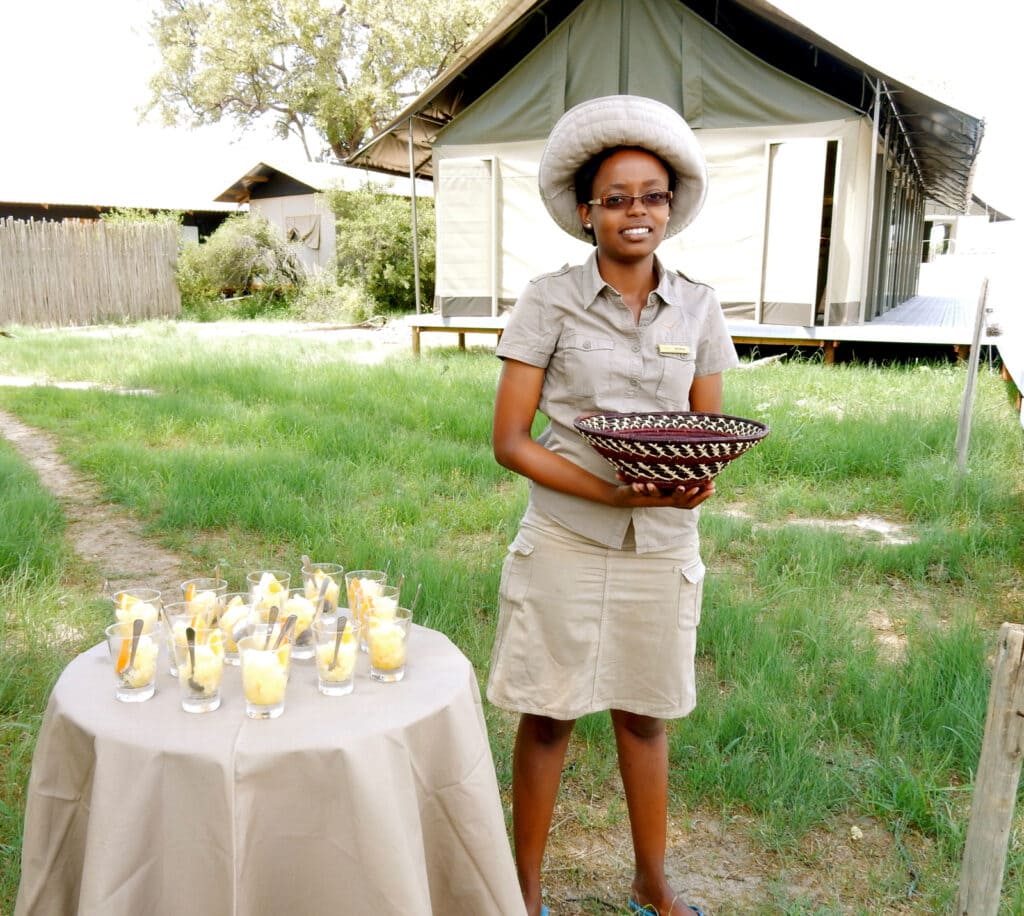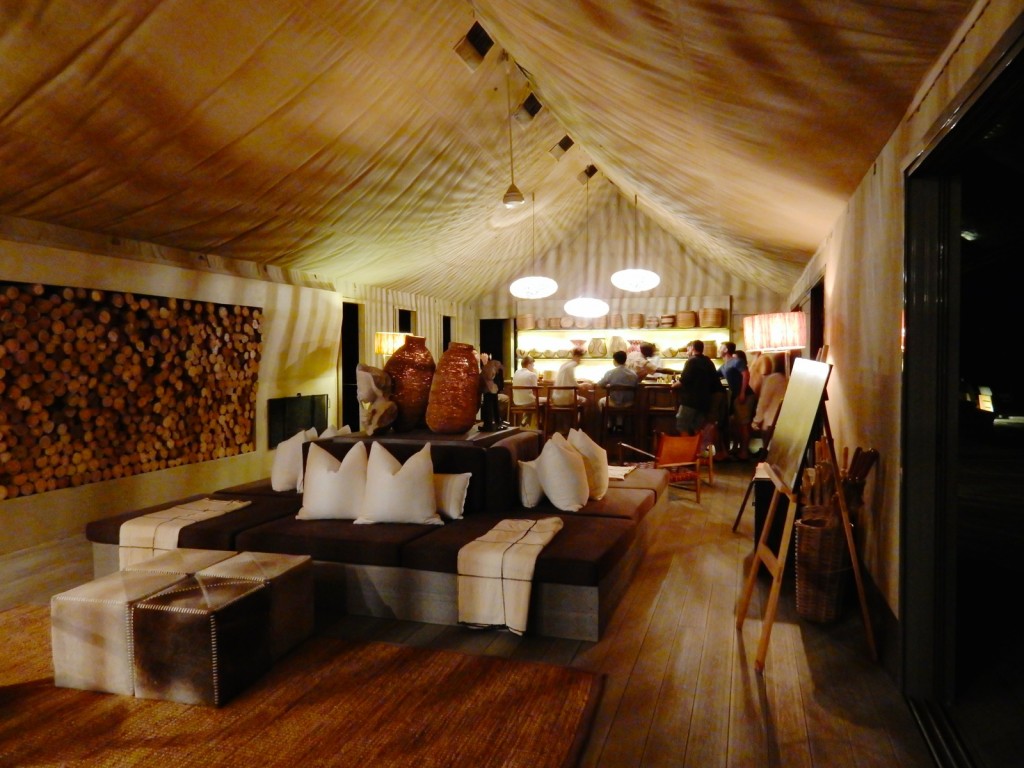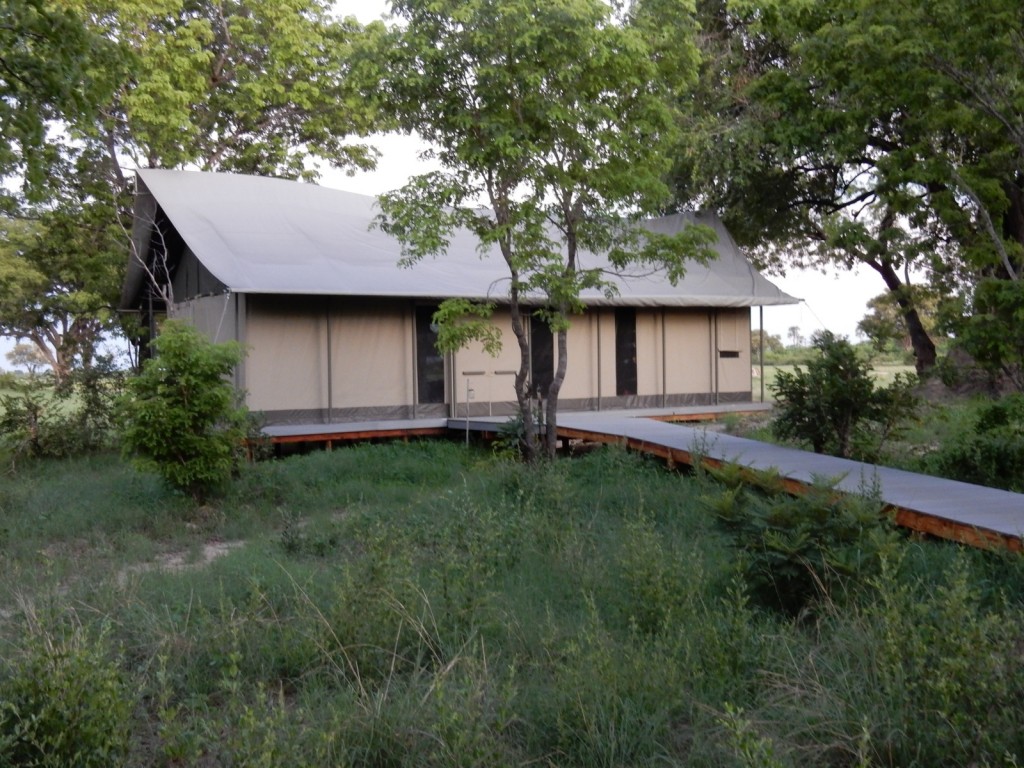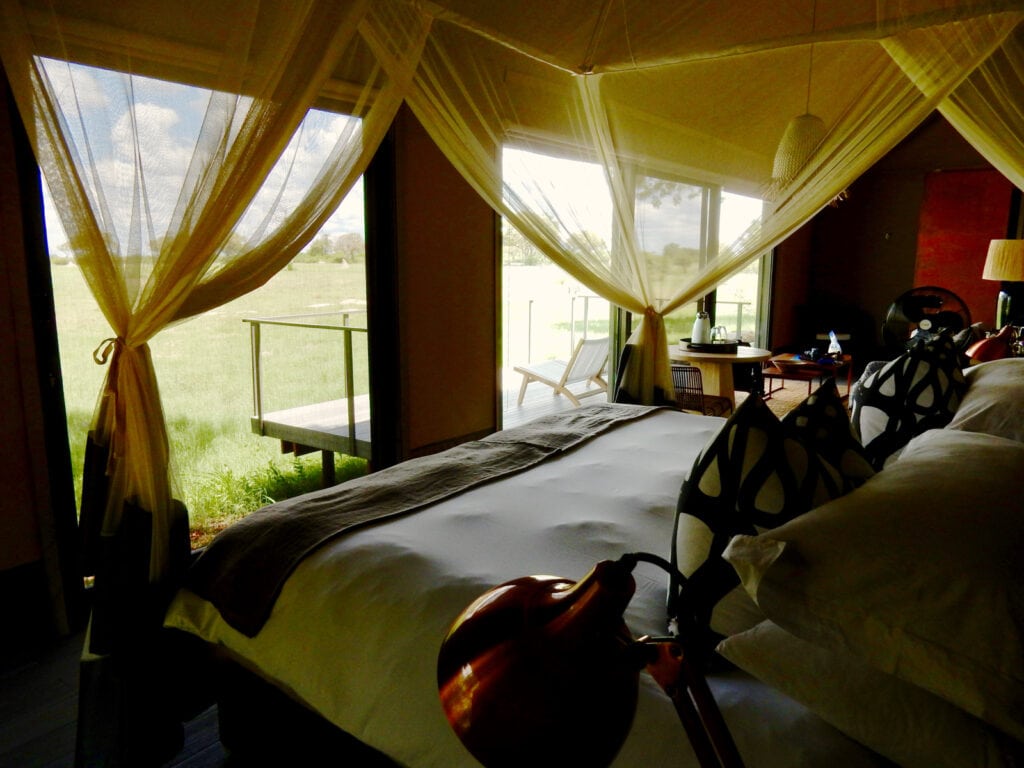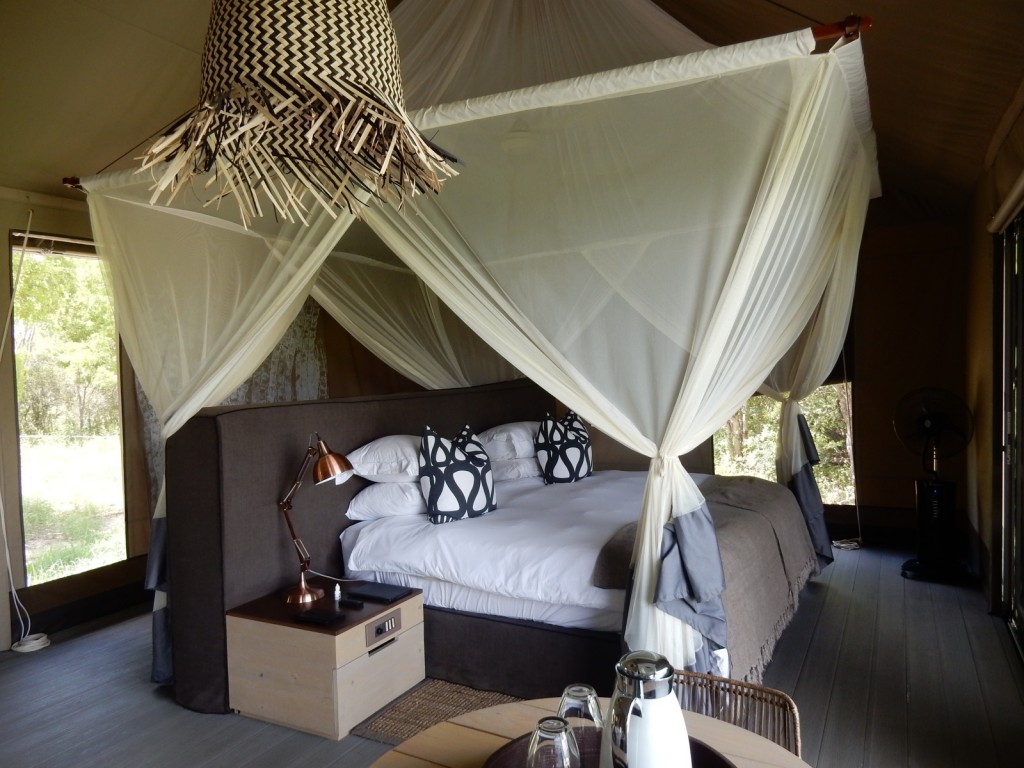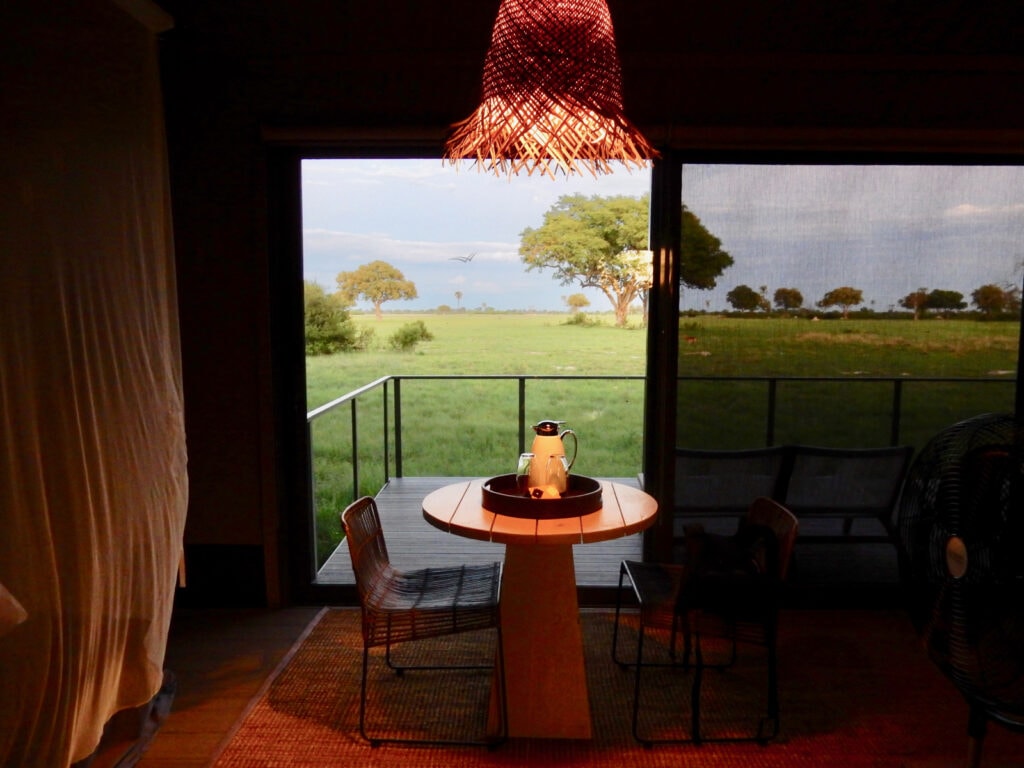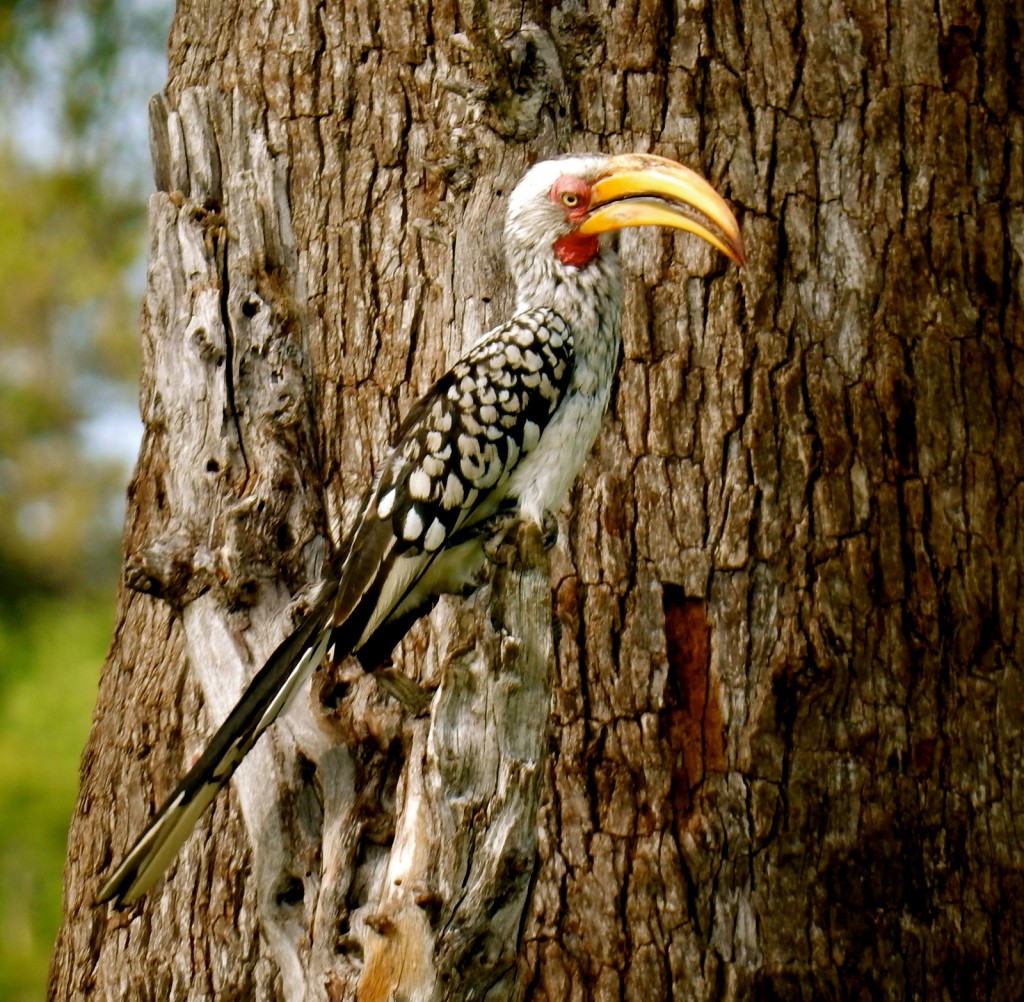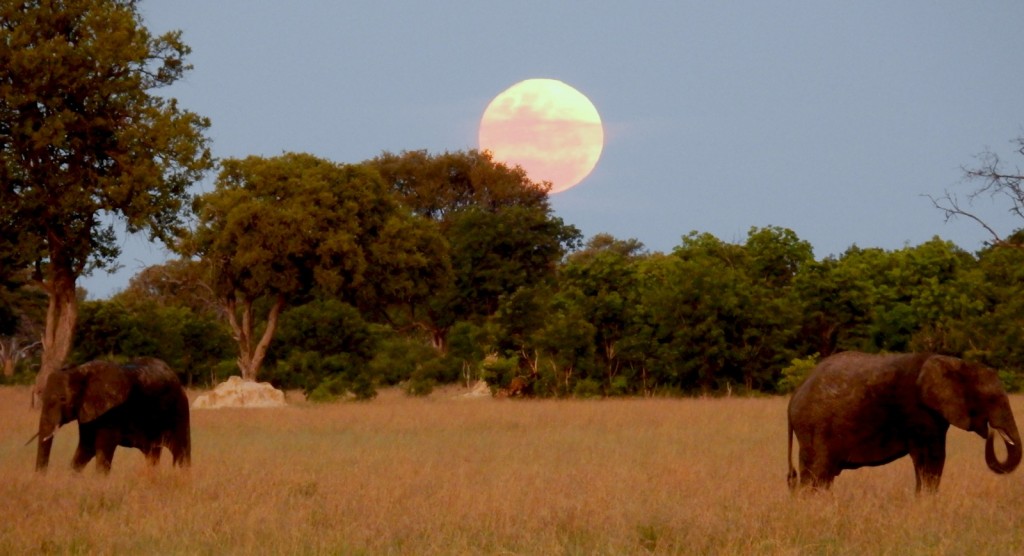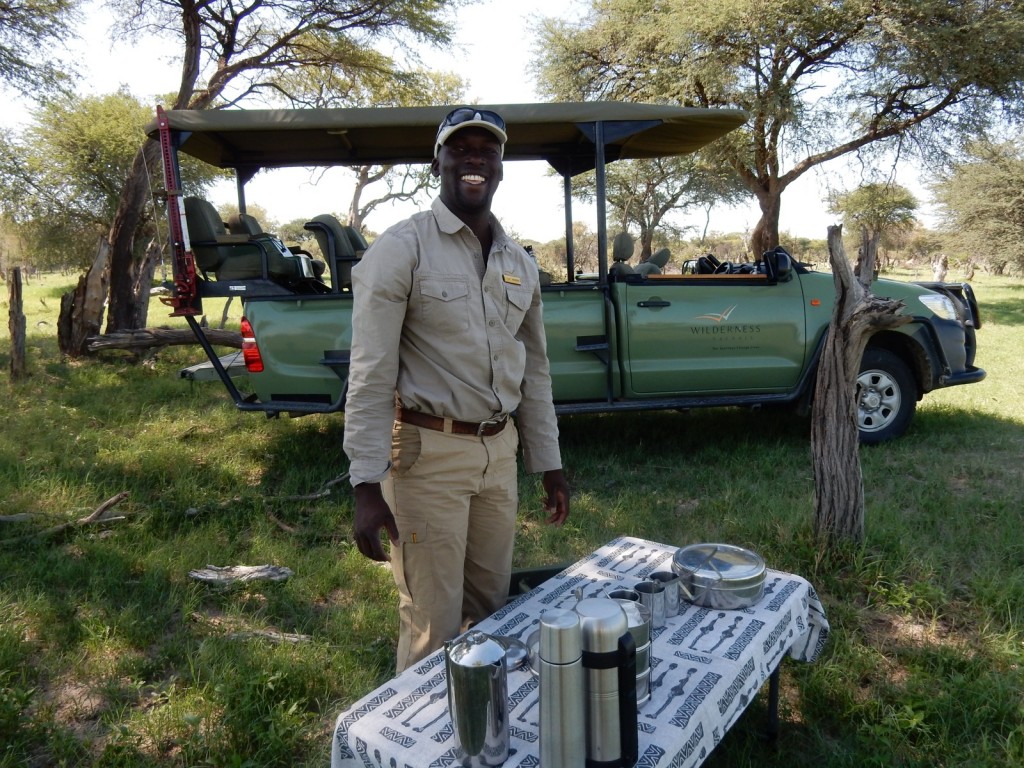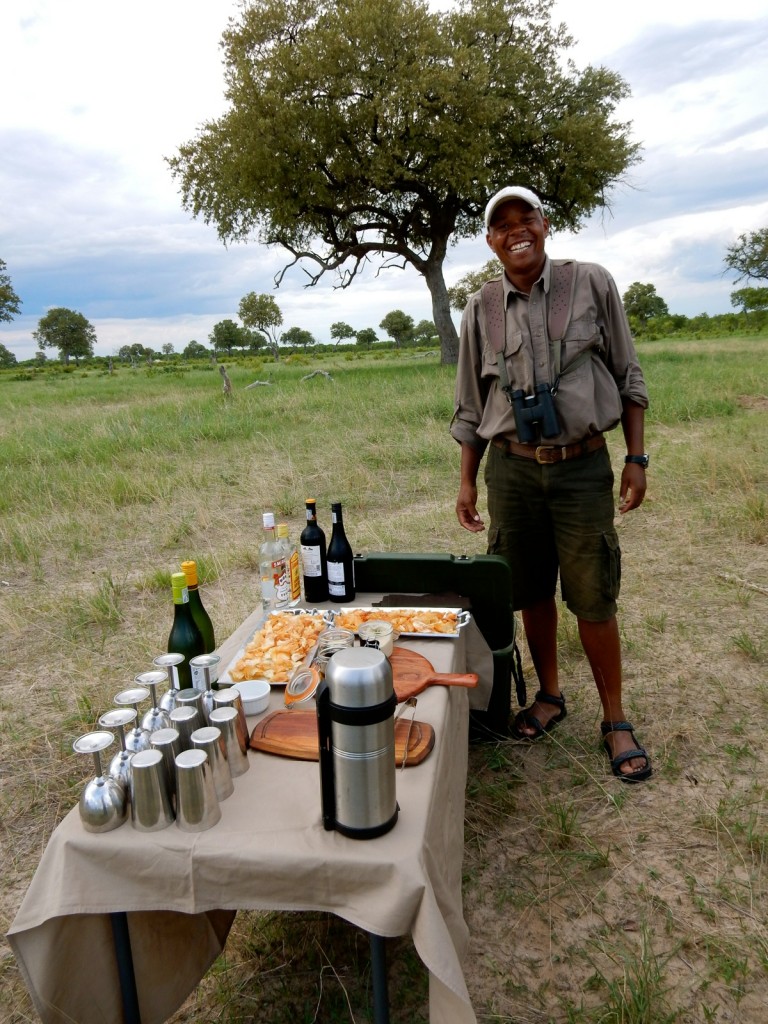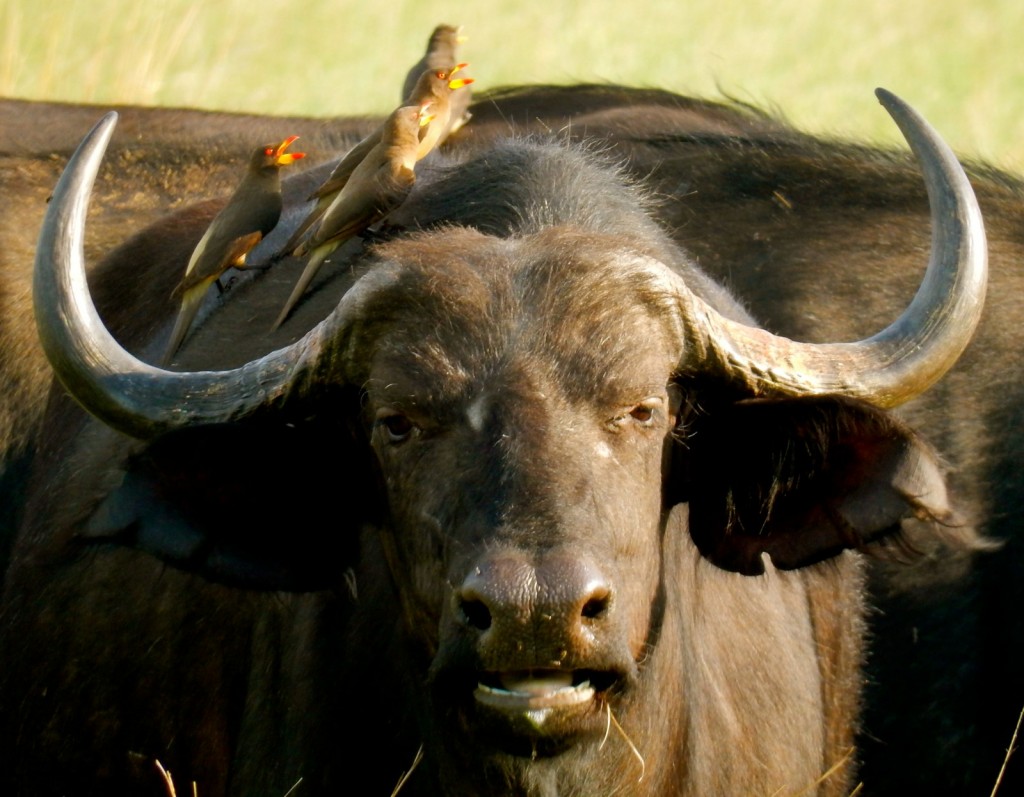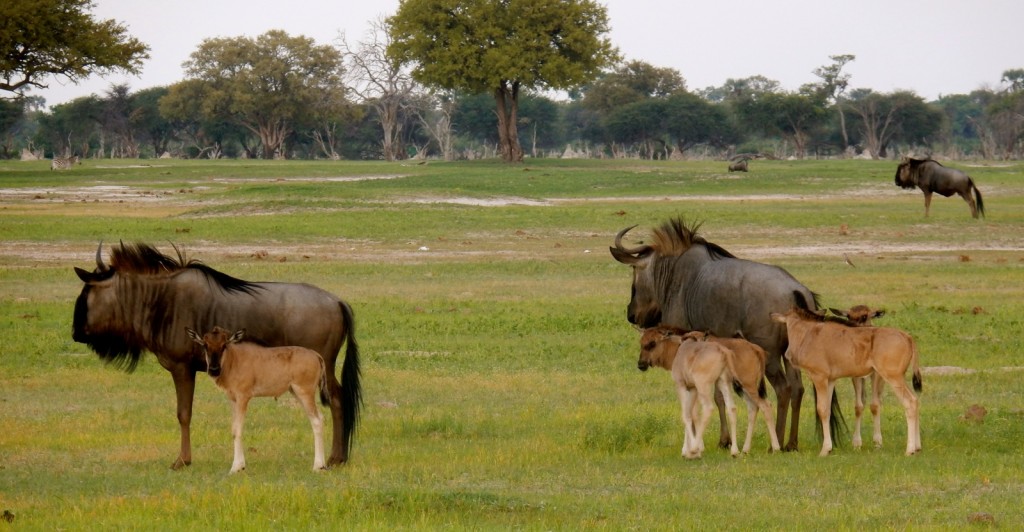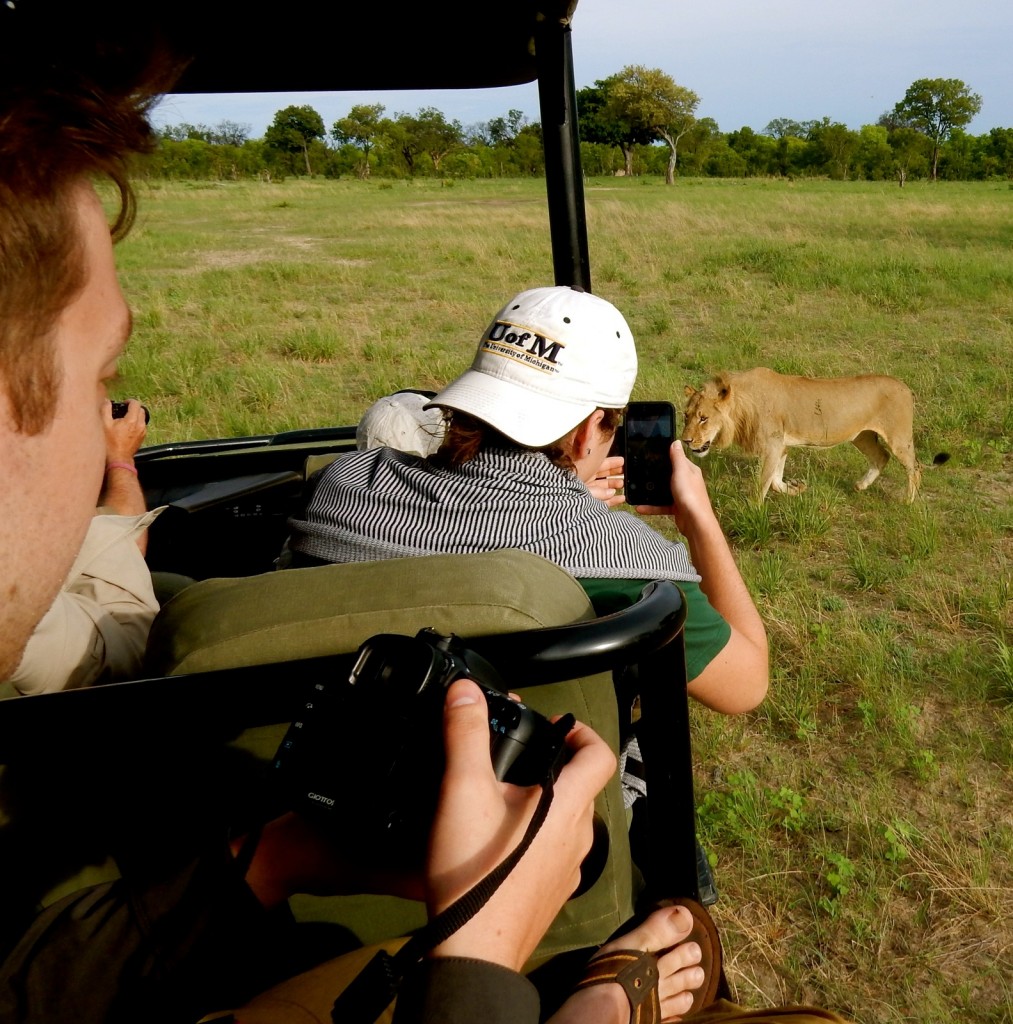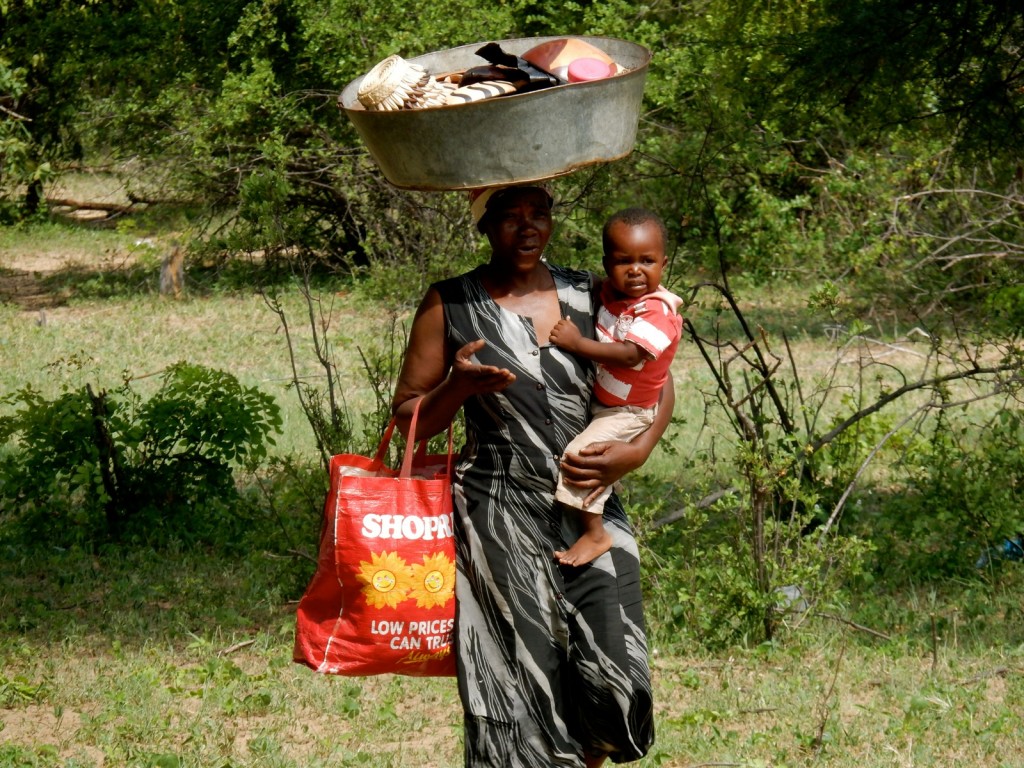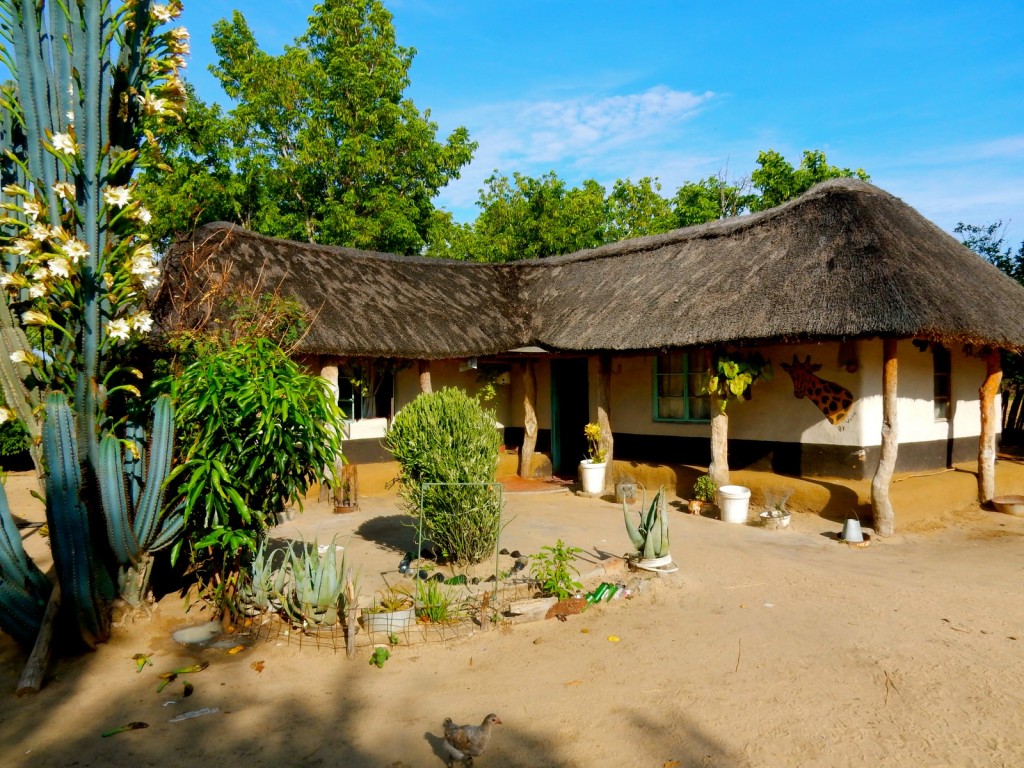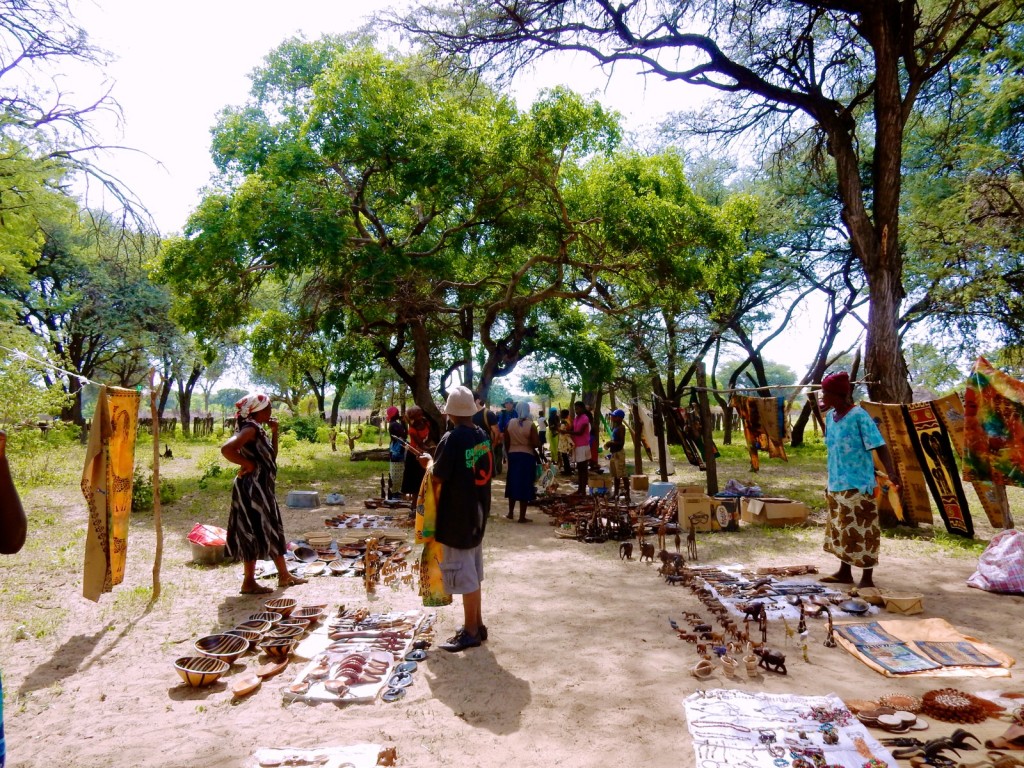You’ll note the difference even before you arrive at camp. Bowls of hand-made potato chips, wine, beer, and hard and soft drinks await guests in the “Sundowner” shelter, hard by a bumpy airstrip. This is where newcomers to Linkwasha Camp Zimbabwe land in Hwange National Park, after a 50-minute flight from Victoria Falls.
You haven’t even seen one animal yet, but you’re now aware that this is service above and beyond. And the best is yet to come.
It’s an hour’s ride from where the bush plane lands to Wilderness Safari’s Linkwasha Camp, which reopened in 2015 to great fanfare and acclaim.
With all the qualities of a superb game drive, the hour flies by, with expert, engaging guides, like the smiley professional photographer, Sam, and the brilliantly eloquent ecologist, Robert, pontificating on a variety of animals doing a variety of things. If you’re lucky, you’ll be privy to a mind-blowing sunset.
Where is Hwange National Park?
Hwange National Park is located in western Zimbabwe, near the country’s border with Botswana. Covering approximately 14,650 square kilometers, it is Zimbabwe’s largest national park and lies about a 1.5-hour drive south of Victoria Falls. The park stretches across a mix of desert sand, sparse woodland, grasslands, and wetlands, providing a diverse range of habitats that support an abundant array of wildlife.
Known for its high concentration of elephants, the park is also home to a myriad of other animals including lions, leopards, and hundreds of bird species. Accessible through several entry gates, the most commonly used being the Main Camp and Sinamatella, Hwange offers both self-drive and guided safari options for exploring its expansive wilderness.
How Many Camps In Hwange National Park?
Hwange National Park, Zimbabwe’s largest national park, is home to a diverse range of camps and lodges to suit various travel styles and budgets. The number of camps can fluctuate due to seasonal operations and other factors, but there are generally around 20-25 camps, including both public and privately operated facilities.
These range from luxurious safari lodges with high-end amenities to more rustic tented camps that offer an authentic wilderness experience. Situated at strategic locations across the park, these camps provide visitors with unique opportunities to experience Hwange’s rich biodiversity, which includes elephants, lions, and over 400 species of birds.
First Impressions of Linkwasha Camp Zimbabwe
Linkwasha Camp Zimbabwe is classified within Wilderness Safari Camps as a “Classic” camp, meaning a step below “Premier.”
But if Seba Camp in the Okavango Delta is a Marriott, then Linkwasha is a Ritz Carlton by way of Kimpton. It’s a funky fun, boutique, designed in the David Rockwell style of grays, earth tones, natural light, and big-picture windows.
Experienced Wilderness Safari Camp guests know to expect iced washcloths (in hot summer), cool drinks, and a warm welcome from the staff upon arrival. This was no different, but the physical beauty of the camp awed us.
The swimming pool, surrounded by upholstered chaise lounges on the gathering/eating deck, overlooks a watering hole several feet away. It glows with indigo-colored light at night. We were told that elephants drink from the pool, just be aware.
The “living room/bar” enclosure is an aesthetically pleasing assemblage of local arts and crafts and eye-catching furniture that would look at home in a chic NYC hotel lobby. There’s a separate library tent and an enclosed dining structure in case it rains.
Rooms at Linkwasha Camp Zimbabwe
Each “tent” is a canvas cabin, with a wall of windows and glass doors overlooking a sweep of plains.
Rain showers afford wildlife viewing – as exterior walls are windows. There are shelves for clothing, cushy chairs, a table, fans, and an extravagant king-sized high-thread-count sheeted bed, encased in mosquito netting at turn-down. The bathroom is en-suite. The whole space is larger than many city apartments.
Guest cabins are quite a walk away from the main camp area. After dark, guests must be escorted by a rifle-toting guide. You are instructed to stay inside until morning.
One night, a potentially aggressive male elephant “in musk” blocked our way. and so the guide had to back us up, put us in a vehicle, and drive us around the back way to get us safely to our rooms. That’s the bush.
Game Drives/Guides
Linkwasha’s main deck is the perfect perch from which to watch a Dung Beetle, the sacred Scarab of Ancient Egypt, bury his precious ball of elephant poop, which we did one evening before retiring to bed.
Guides take great pleasure in showing guests both big and small creatures. Sometimes it’s satisfying to shrink attention down to nearly microscopic levels.
But of course, it’s the larger creatures that draw visitors to these African countries. And there is no shortage of those in Hwange National Park. Even before reaching the camp on our first day, we saw jackals, baboons with babies, and a collection of elephants beneath a large, clear rising moon.
Morning and Afternoon Drives
There are two game drives per day: daybreak and sundown.
Guests wake up at 5 a.m., scarf down a quick breakfast, and are off on the dirt roads at 6 p.m.
In the afternoon, after 3:30 tea in camp, you’ll once again go out. This time, you stop for a leg stretcher and drink while watching the sun go down.
On our drives, we saw rainbow-colored birds, cheetah brothers (“excellent hunters”) chillin’ after a kill, zebras, giraffes, and Cape Buffalo.
At one point, we witnessed every kind of animal from buffalo to giraffes, sables to wildebeest, warthogs, and zebras in vast numbers, grazing on a large plain.
The wide open area was teeming with herds of a variety of animals. It looked absolutely biblical in the dwindling sunlight.
A good guide will find an unfolding story and stay for awhile to narrate. Our guides, Sam and Robert (on alternate days), were experts.
A pride of lions had taken down a sable and one early morning we watched as 22 of them took turns eating. Male dominant first, females second, and offspring last.
And then, we watched as a young male was banished from the pride. By age 2. males are cast out of the group to form their own pride. In this case, the adolescent lion sulked off, walked within inches of our vehicle, and looked back longingly.
Over the course of 45 minutes, he tried to slink back to be with his siblings. As the mother of kids who recently began their own lives, I found this scene both heartbreaking and fascinating.
Village Tour
Linkwasha Camp offers a tour of a remote village comprised of 70 homesteads right outside Hwange National Park borders. This foray provides an intimate look at how people live in the bush, and an opportunity for cultural exchange.
We met with the Headman, Johnson, who oversees this village and three others in the area (and reports to a regional Chief). Villagers still farm with ox and plow and the settlement isn’t wired with electricity. But, amazingly, residents are connected with the outside world. One solar panel provides enough energy to charge batteries, which are used to power a few lights and two computers in the village school.
Village Life
The Headman’s homestead consists of houses for his extended family, a kitchen building, and a beautifully decorated dining hut fashioned from dead termite mound material.
According to Johnson’s daughter-in-law, women visit other dining huts for decorating ideas much like people here consult lifestyle magazines. Building roofs are thatched with dense grass bound by tree limbs. The headman’s house is thatched, too, but more modern and landscaped like a Tucson patio home.
Please bring US dollars if you sign up for this village tour. There’s plenty of shopping to be done at the Market, where a dozen or so merchants sell beautifully carved bowls, figures, salad spoons, textiles, bags, and jewelry. Village income from these goods can mean the difference between eating and going without food, especially in drought years when crops are scarce.
Looking for more vacation ideas in Africa? Check out Seba Camp: Botswana’s Premier Wildlife Destination.

